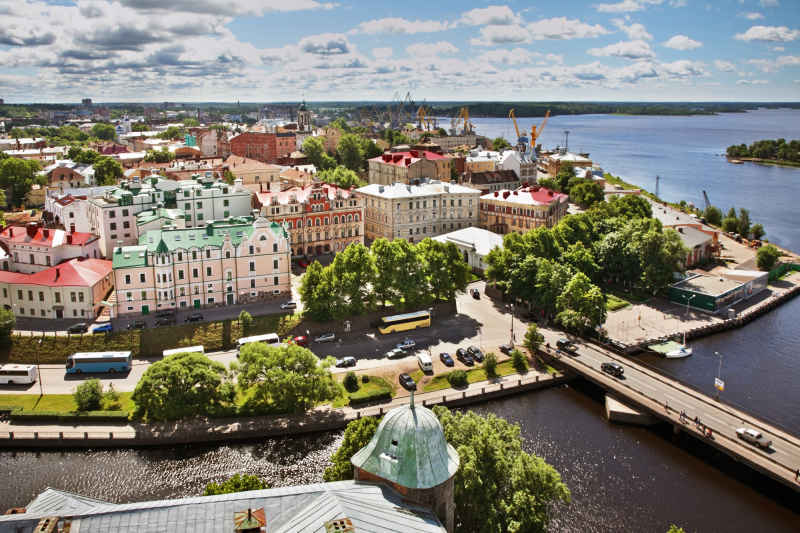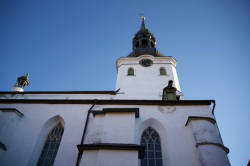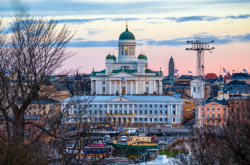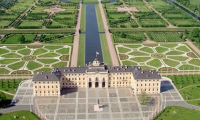History
Vyborg, a city with a difficult history. Located just over 100 kilometers from the historic center of St. Petersburg, this town - Finnish Viipuri, Swedish Viborg, German Wiburg - has a history more ancient than ours. Based on the retelling of the chronicles that have not survived to this day, the Novgorodian elder Gostomysl founded a "city by the sea" in the 9th century and named it after his eldest son "Vybor", and some believe that this was the beginning of this city with such a rich and ambiguous history.
The official history of Vyborg begins in 1293, when the Swedish knights, during one of the crusades, ordered the regent of the Swedish King Torgils Knutsson to establish a castle with this name in place of the destroyed Karelian island.
Credit: kotafoty / photogenica.ru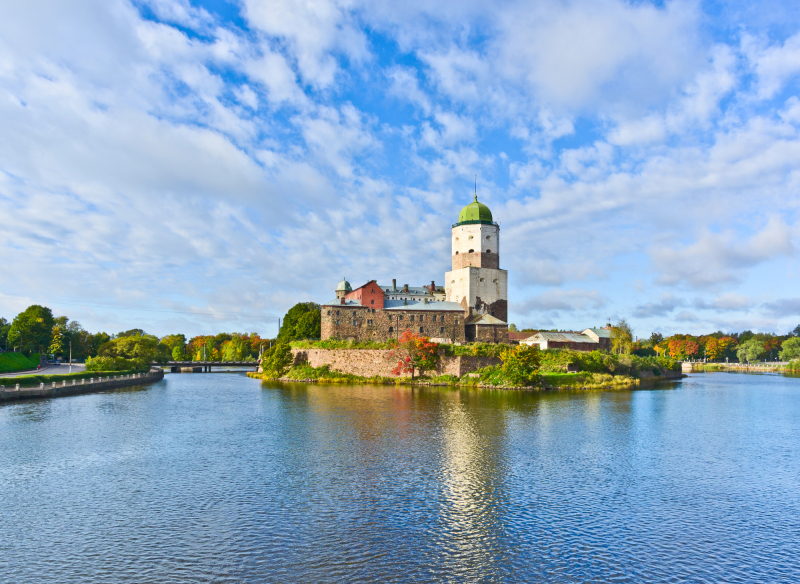
The settlement developed together with this castle, and also adopting the same name, remained unchanged even when the town was conquered by Peter the First as a deliberate move to protect St. Petersburg. And only in 1917, when the Vyborg gubernia as part of the Grand Duchy of Finland separated from Russia, the town was renamed to Viipuri, while it was within Finnish territory. And then, in 1940, after the Russo-Finnish war became a Russian city again.
This fascinating history is reflected in its entire appearance, which combines many different styles, from the eclecticism, which keeps traces of the Italian and Swedish-German renaissance, to Finnish national romanticism and the Soviet Stalinist empire.
What to see
Modern Vyborg is a town in all respects close to Europe. Lots of buildings still have Finnish windows, red roofs and ornaments inspired by northern folklore. Vyborg was lucky to become the first and the most popular border town to Finland and Europe. Even during the Soviet period it was a crossing point for Finnish trucks and was a kind of “foreign town inside Russia”
The border with Finland became more popular among tourists after the collapse of the Soviet Union and it led to the development of international trade, and increasing of active tourism - both outgoing and incoming. All of these factors helped the city to constantly develop, preserving the historic atmosphere.
The unique architectural appearance of the historical part of Vyborg, which has been formed over more than seven centuries under the influence of several national cultures, is represented by architectural monuments of different epochs, from the ancient buildings of the Middle Ages to the buildings of the late 20th, early 21st centuries.
The old town hall, rebuilt in 1898 in the Hanseatic style, looks like a ready-made decoration for a historical film - but in fact it is a simple apartment house (overlooking a medieval castle and the monument of Torgils Knutsson).
Credit: deb-37 / photogenica.ru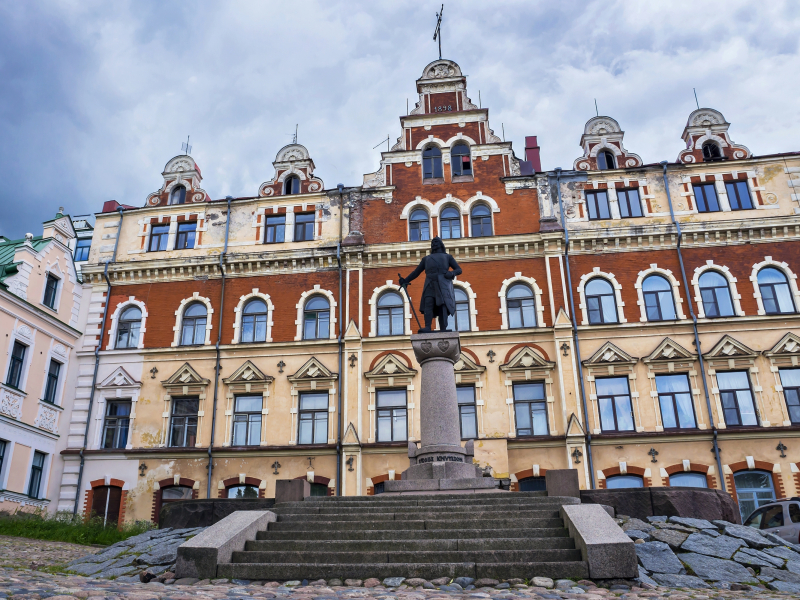
The building of the Granite Palace, which is an excellent example of national romanticism, attracts the eye with its heavy, asymmetric granite facade, semi-circular windows with medallions and triangular pediments with curls.
Everything in this city - from the historical elegant buildings in the old part of the city, to the impressive, by its logicality and simplicity, modern buildings in the port - incites in you the desire to urgently remove your camera (at least the phone one) and even the dilapidated buildings provoke not only the usual sadness of desolation, but also some romantic impulses.
A great example of this magic combination is the revenue house "Domus", once one of the most beautiful buildings in Vyborg, and now falling apart, with an aqua green building net strewn across it, attracting the attention of tourists and an object of amateur photography, author's performances and street art.
Credit: Maria Khuzina / ITMO.NEWS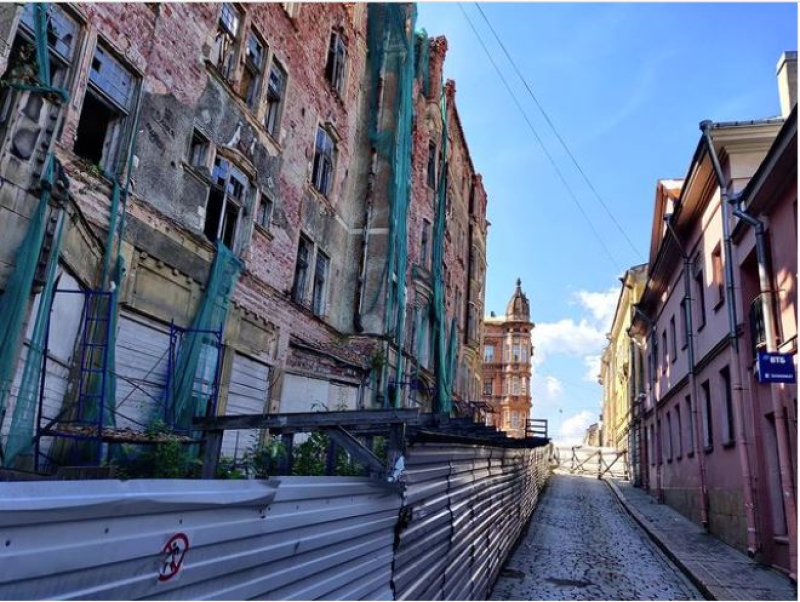
Or the famous Clock Tower - the dominant feature of the Old City, the lower level of which was built in 1494. Once it was the bell tower of the Vyborg Сathedral, destroyed during the Soviet-Finnish war, and its entire appearance holds within it the imprint of history. Now, surrounded by scaffolds, and patiently awaiting restoration, it attracts the gaze of visitors and tourists, with its shabby look from time and sea wind, but proudly towering over the old city.
Other buildings, on the contrary, are avoiding the excessive ancient look, like the medieval castle which has survived many wars, and is the heart of the city. It’s now going through restoration, all covered in scaffolding, but the rest of the museum complex is functioning properly, and waiting for tourists eager to plunge into the temples of knighthood and medieval life. This building, which is a unique monument of Western European defense architecture, is open everyday.
The magnificent (and, fortunately, perfectly preserved and not going through restoration) example of the Finnish period is the Alvar Aalto Library - the central library of Vyborg, built in 1933-1935 and designed by the Finnish architect Alvar Aalto. It was here that for the first time a unique feature of Aalto’s architectural style was manifested - a combination of rigor of functionalism and gentle smoothness of natural lines. The library makes an incredible impression, the combination of wood and natural lighting fascinates - and fortunately, even as a tourist, you can see all this magnificence, as the library conducts regular excursions.
And for nature lovers Vyborg prepares a special treasure - the rocky park of Monrepos (from the French “Mon Repos” - "my rest", "my recumbence") on the shore of the Vyborg Gulf.
Credit: OlegMirabo / photogenica.ru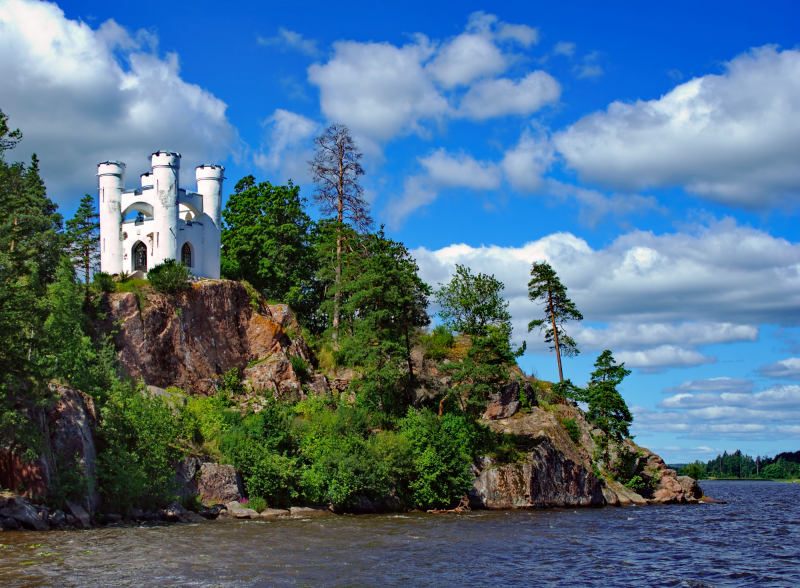
The historical part of the park - the manor and park ensemble of the late 18th and early 19th centuries, which includes monuments of wooden architecture of classicism - the main manor house and the Library outbuilding - organically transforms into a forest park complex, which combines rare beauty with rocky landscapes. The unique island-necropolis and the water source known since ancient times, the majestic "curly" rocks and ancient avenues on the picturesque coast - Monrepo is like a magical forest, and it's easy to get lost - but doesn’t it make the trip even more exciting?
How to get there
If you, like the author of this article, are fascinated by the idea of visiting this unusual city, we are ready to share practical information on how to get there.
The easiest and quickest way to get to Vyborg is to go to Finlyandskii Vokzal (Finland Railway Station, Ploshchad Lenina metro station) and buy a ticket for the suburban train ("electrichka" in russian). It goes more than ten times a day (check timetable here ), every one and a half hours. You can take cheaper and more authentic trains (which will take you to Vyborg in 2-3 hours for 300 rubles one way), or ride the fancy and high-speed “Lastochka” [ed. Swallows] (about 350 rubles one way), which take only an 1 hour and 10 minutes. Tickets can be bought at the ticket offices, or in numerous self-service machines (which, by the way, have a menu in English), and in order to avoid a queue on the way back, you can also buy a return ticket immediately (which will work for three days from the date of purchase).
It is very important to remember that the ticket is needed at all stages of the journey - to get to the platform through turnstiles, in the train itself it will be checked (possibly several times), and when leaving the platform on arrival - and also on the way back, if you have a return ticket.
Food
And after a walk around Vyborg, you can tuck in for a delicious meal, there are lots of cozy places ready to feed and warm up tired travelers.
Near the Aalto Library, Espil restaurant recently opened which serves traditional Russian dishes, in an interior full of light from the huge terraced windows. The restaurant is interesting because it is an exact copy of the restaurant, which was operating in the same location from the end of the 19 century until the 1940s. The building was built by architect Johan Blomkvist and was considered one of the attractions of Finnish Vyborg and, presumably, was destroyed during the Second World War - but now recreated again.
A five minute walk from the central Lenin Square, there is a wonderful ice cream parlor, where delicious dessert is served, traditional for the Soviet Union, in iron bowls, and after eating delicious, but cold goodies, they offer hot chocolate, generously decorated with cream.
On a small cozy square with the Monument to Torgils Knutsson - which faces the castle that was once founded by his order - there is a Krendelnaya (from the Russian "krendel" - pretzel) - where you can take a quick and tasty snack, and of course take with you a large Vyborg pretzel and hot coffee for a long walk in the Castle.
Do you also want to lose your return ticket and stay in Vyborg forever?
